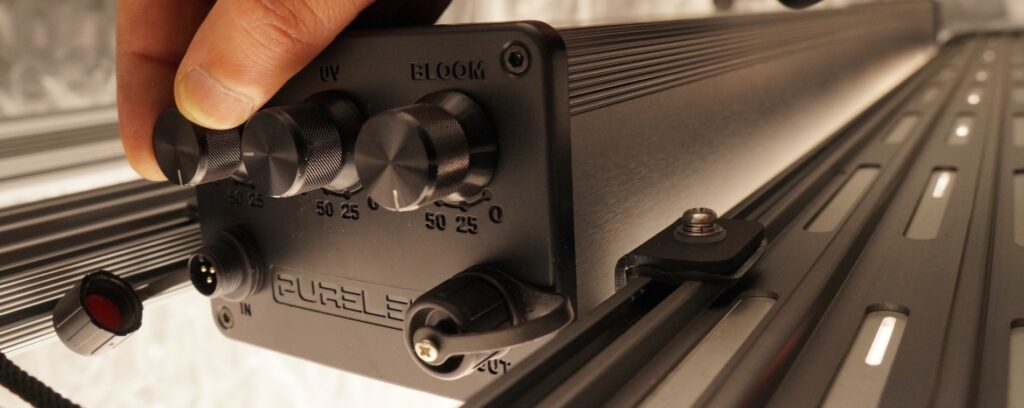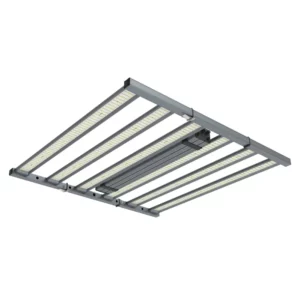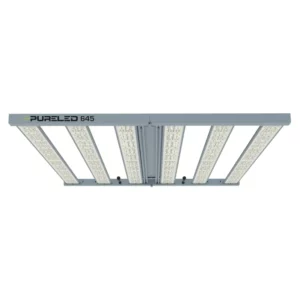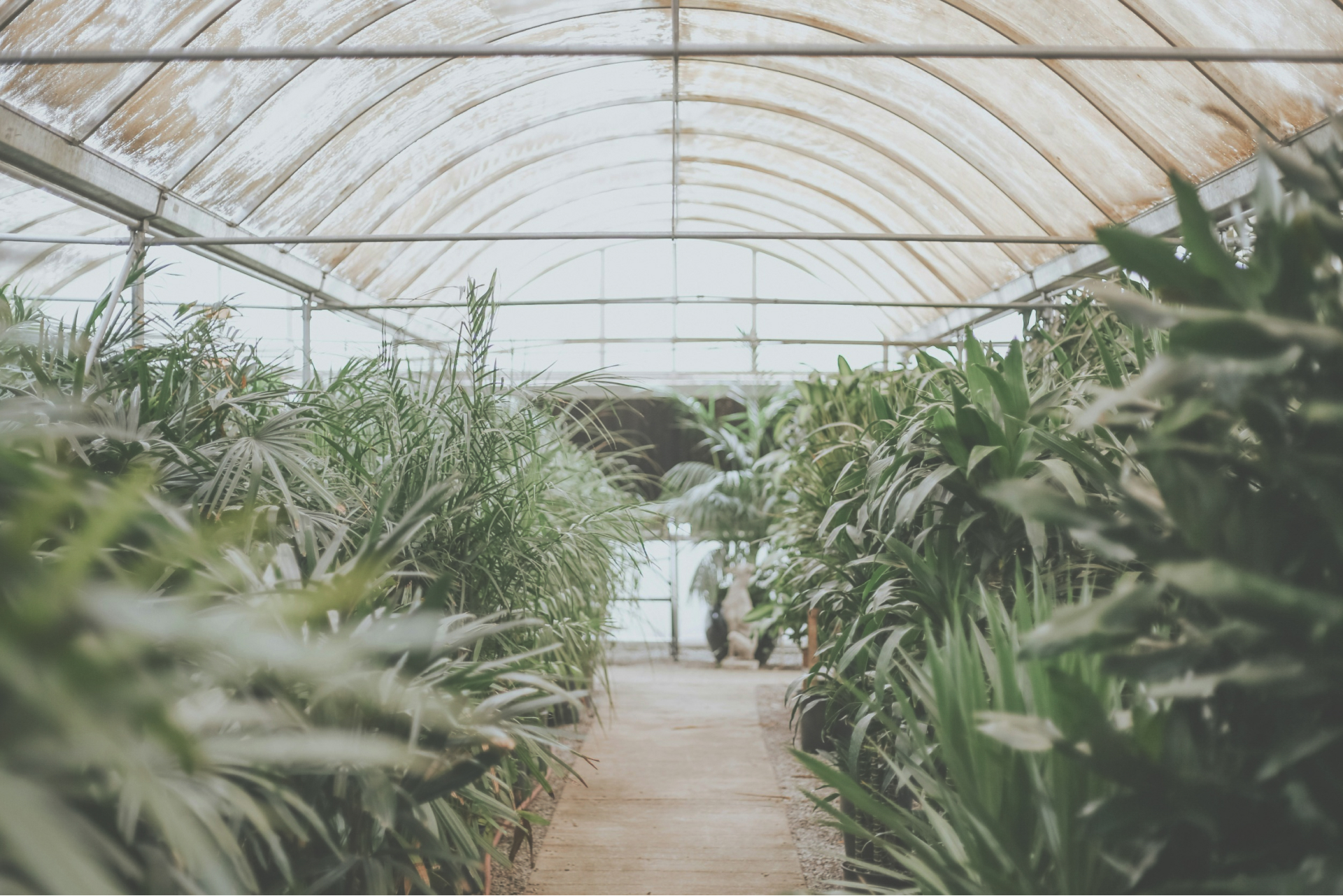The importance of ultraviolet light in LED lighting for cannabis cultivation

LED grow lights have become a popular choice among cannabis growers thanks to their many advantages over traditional light sources. However, there is one aspect of LEDs that is often overlooked: the important role played by ultraviolet light in these luminaires. Below, we explain why you should take this type of radiation into account in order to obtain the best yields from your marijuana plants.
All light is made up of particles that travel in waves and the distance between them, or the wavelength, determines their properties. Ultraviolet light is a type of electromagnetic radiation with a shorter wavelength than visible light. And it is divided into three categories that we call UVA, UVB and UVC.
- UVA light (315 – 420 nm): has the longest wavelength and lowest energy of the UV spectrum. Sunlight contains a lot of UVA light and most outdoor plants are exposed to UVA rays for a long time. Studies have shown that they do not damage the DNA of most plants.
- UVB light (280 nm- 315 nm): sunlight also contains UVB light. If plants are exposed to UVB light for a long time in the natural environment, their DNA will be damaged and then they will produce many defensive chemicals to protect themselves from it. UVB rays damage plants in the same way that they damage human skin by burning.
- UVC light (below 280 nm): UVC light has the shortest wavelength and the highest energy in the UV spectrum. It can cause sunburn in humans, destroy plant DNA and directly kill bacteria and insects. However, most of the UVC light emitted by the sun is absorbed by the ozone layer and only a small amount reaches the earth.
Effects of ultraviolet light on cannabis plants
When plants are exposed to ultraviolet light, they create natural sunscreen compounds. This is comparable to how humans produce melanin and tan when exposed to sunlight. This reaction to exposure to specific wavelengths of light is called photomorphogenesis. Photomorphogenic responses to UV exposure create several natural compounds as an evolutionary safeguard response.
Ultraviolet light has been shown to increase the activity of secondary metabolites in many plants, and this is also the case for cannabis. The most important secondary metabolites from a grower’s perspective are cannabinoids such as THC and CBD, as well as terpenes and flavonoids that give cannabis its distinctive aroma.

Short wavelength irradiation, such as UVA rays, activates the plant’s response system, which begins to protect itself from abiotic stress caused by extreme environmental conditions: in other words, it makes the plant create its own sunscreen in the form of trichomes. The higher the trichome production, the higher the levels and activity of metabolites and, therefore, the higher the THC accumulation in the flowers.
This protective function is especially important for cannabis plants, which are often grown at high altitudes or in regions with strong sun exposure. In such areas plants have unobstructed access to abundant sunlight whose spectrum is greater in UV wavelengths than at lower altitudes. By producing THC, these plants can survive and thrive in conditions that would be challenging for other species.
But these secondary metabolites protect the plant not only from light irradiation, but also from pathogens and pests. The result is a compact plant with a higher THC concentration and, in addition, stronger against pathogenic fungi such as botrytis. Ultraviolet light has been shown to directly decrease the growth of fungal pathogens by inhibiting sporulation, the mechanism of asexual reproduction through spores.
UV rays also signal plants to change growth pattern, chemistry and transpiration. Light is not only energy for plants; it is also information. And plants have developed quite incredible ways of “seeing” their surroundings in order to adjust their growth and optimize energy capture.
In this way, a cannabis plant knows that it is exposed to direct or intense sunlight when there are high levels of UV rays. The opposite is also true: if there are low UV levels, the plant will think it is under shade, reacting by significantly extending its stems and stretching, wasting energy and reducing its yield.
UV rays also activate a series of photoreceptors (molecules that detect light and send signals to the plant) that trigger a number of changes, including increased chlorophyll production, the creation of larger leaves that capture more light, and the opening of stomata to let in more carbon dioxide. All this influences the optimal development of cannabis.
So what type of UV light should I use for cannabis cultivation?
When growing marijuana outdoors, you don’t have to think about getting enough ultraviolet light, as your plants already get the right amounts from the sun: lots of UVA, a little UVB and virtually no UVC.
The safest part of ultraviolet light, for both human skin and plants, is UVA, which is closest to visible light. It is the UV spectrum that most LED grow lights attempt to include as a minimum. It has been shown quite conclusively that UVA enhances growth during the vegetative stage.
In nature, when the sun is strongest, throughout the summer, is when plants will be in this phase. By providing them with a healthy dose of ultraviolet light, you are making them aware that they don’t have to stretch to compete and that they can use their energy to grow lush and dense. In doing so, the additional leaves will allow for more photosynthesis, thus providing more energy. Because of this, many growers give their plants UVA light only while they are in the vegetative stage. Other growers will keep UVA light on their plants for their entire life.

Now let’s talk about UVB light. There is a market for LED lighting that emits both UVA and UVB. Therefore, it is possible to obtain that portion of the spectrum for your plants. However, the impact of UVB rays is not conclusive.
There are theories that UVB light increases resin production as a stressor near the end of the flowering cycle; and not a few growers add UVB lighting during the last 2 weeks of flowering to help increase resin production, always in short periods ranging from 15 minutes to 2 hours per day. However, UVB rays are dangerous for human skin and many people think that this feature is too risky for amateur crops. For this reason, most LED grow lights that include UV light actually focus on UVA rays.
Last but not least, there is the UVC light. This type of light has an interesting utility. Outdoors, the ozone layer almost completely filters out UVC rays, as it actually carries too much electromagnetic radiation for plants to process. However, it can be used in small amounts to kill certain things such as mold spores, water bacteria and soil pests. This is known as ultraviolet germicidal irradiation. Technically, UVC light is a kind of disinfectant. It is generally not marketed for cultivation, but rather as a water or air purifier and also as a bacteria remover on surfaces and foodstuffs.
But UVC can be used in brief, limited applications to kill pests and mold or disinfect something like your water tank. Prolonged exposure to your plants will cause damage similar to burns. Similarly, post-harvest cannabis is susceptible to a variety of microbial contaminants, which can cause spoilage and health risks. UVC radiation can be used to help prevent these problems by killing microorganisms on the surface of cannabis buds or in the air to dry/cure plants.
The benefits of balanced ultraviolet light in LEDs
Most artificial light sources commonly used in cannabis cultivation (such as HPS lights) contain virtually no UV light, so indoor growers do not get the increased production of trichomes, cannabinoids and terpenes that UV exposure can provide. Even greenhouse growers are missing out on the increased potency provided by UV exposure because plastic greenhouse covers block the sun’s natural ultraviolet light.
That’s why full-spectrum LED luminaires, such as those you can find in Pure Factory’s PureLED PRO or PureLED Q range, have revolutionized the cannabis grow lighting industry, as they are designed to mimic natural sunlight; and, like sunlight, they also produce ultraviolet light.
-
 Pure Led EXPERT1.290,00 €
Pure Led EXPERT1.290,00 € -
 Pure Led PRO464,64 €
Pure Led PRO464,64 €
Typically, these full-spectrum LED lamps have a color rendering index (CRI) of 90 or higher (100 is actual sunlight) and a Kelvin temperature of 5000 or higher. Since the ultraviolet light produced by these LED luminaires is lower, it is within the safe range and does not harm our health in any way. Therefore, LED lights are safe and reliable for any cannabis growing application, both for us and for our plants.
But it is also possible to supplement existing broad-spectrum luminaires (as close to full-spectrum illumination as can be obtained without UV) with stand-alone UV luminaires. Although it can be tricky to get the ratio of UV and visible light correct; and dedicated UV luminaires also bring problems of uneven distribution of UV light in the growing area.

For these reasons, it is ideal to opt for an LED grow lamp with the optimum proportion of UV light already built in. This is the case, for example, with PureLED‘s Expert range, a 720W low power, low consumption, high luminosity lighting system with an independent channel to regulate UV radiation, which promotes the performance of essential oils and resin creation.
It is specially designed for indoor cultivation and its light spectrum facilitates the ideal development of cannabis strains, so that they can offer their maximum expression in structure, morphology and cannabinoid level. Get ready to take your crops to a new level of excellence and quality, experiencing impressive results like you’ve never seen before thanks to UV light!

No comments